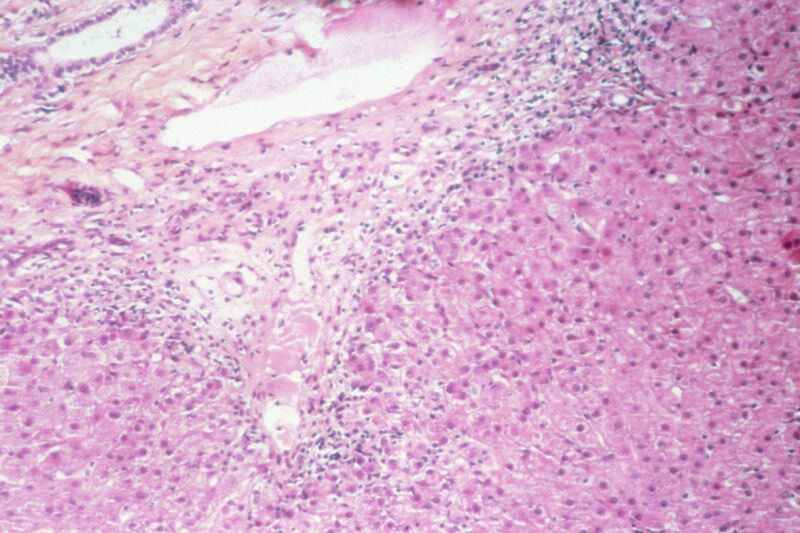
The U.S. Centers for Disease Control and Prevention has ruled out the pandemic coronavirus, SARS-CoV-2, as a possible cause of the puzzling, international outbreak of severe hepatitis (liver inflammation) in children, according to a statement released Friday.
The outbreak has sickened more than 170 children in more than a dozen countries in recent months, and the number of cases is rising by the day. About 10 percent of children — usually under the age of 10 — have required a liver transplant. The World Health Organization has reported one death.
In the US, officials in at least five states have reported at least 25 confirmed or possible cases: Alabama (9), North Carolina (2), Wisconsin (4), Illinois (3) and California (7). At least three of the cases in the US required liver transplants and officials in Wisconsin are investigating a possible death related to the outbreak.
Like other public health agencies around the world investigating the outbreak, the CDC’s leading hypothesis is that an adenovirus is behind the cases. Adenoviruses are a large family of viruses that are not known to cause hepatitis in healthy children. They are most commonly associated with the common cold, but also with gastroenteritis and conjunctivitis (pink eye). However, many of the children affected by the severe hepatitis outbreak — who were previously healthy — have tested positive for an adenovirus.
Hypotheses
Still, some international health authorities have kept open the possibility that SARS-CoV-2 could also be involved in the cases. In a technical briefing paper released by the UK Health Security Agency earlier this week, officials noted that SARS-CoV-2 was the second most common infection identified in the cases following adenovirus. And their main working hypothesis involves two scenarios involving SARS-CoV-2. The leading hypothesis is:
1. A cofactor affecting young children that aggravates normal adenovirus infections or causes them to cause immunopathology. The cofactor can be:
- susceptibility, for example due to lack of previous exposure during the pandemic
- a previous infection with SARS-CoV-2 or other infection, including an ommicron-limited effect
- a co-infection with SARS-CoV-2 or another infection
- a toxin, drug, or environmental exposure
The British officials also cited a new variant of SARS-CoV-2 as a possible cause, although this was the hypothesis that fitted the data worst so far.
The CDC, meanwhile, has apparently ruled out SARS-CoV-2 entirely, according to Friday’s statement, although the agency has not reached a definitive conclusion on the cause. The statement read (emphasis theirs):
“Right now we believe that adenovirus can cause these reported cases, but other potential environmental and situational factors are still under investigation. …Some causes have already been ruled out, including:
- hepatitis viruses A, B and C
- SARS-CoV-2 infection
- autoimmune hepatitis
- Wilson’s disease [a rare genetic disorder in which copper accumulates in organs]
Details
The statement follows additional details about nine of the US cases, all from Alabama, published Friday in the CDC’s Morbidity and Mortality Weekly Report by CDC and other public health experts. The data does not provide much additional insight into the cause of the cases. But it does note that none of the nine children had a documented history of previous SARS-CoV-2 infection, and none of them tested positive for the virus, which could explain why the CDC ruled out SARS-CoV-2.
Instead, all nine tested positive for adenovirus, and typing in five of the patients identified adenovirus type 41 in all five cases. Like all other adenoviruses, type 41 is not known to cause hepatitis in healthy children. The MMWR authors note: “Adenovirus type 41 is mainly spread by the fecal-oral route and mainly affects the gut. It is a common cause of pediatric acute gastroenteritis, usually with diarrhea, vomiting and fever, often accompanied by respiratory symptoms .”
Those symptoms are consistent with the initial symptoms reported by the nine cases, with seven reporting vomiting, six reporting diarrhea, five reporting fever and three respiratory symptoms. But unlike a typical infection with adenovirus type 41, the children then developed yellow eyes, enlarged liver, jaundice, elevated liver enzymes, and one child developed encephalopathy. Three of the children had acute liver failure and two required a liver transplant. They are all reportedly recovered or recovering.
The report also listed their ages: five of the children were between 0 and 2, one child was between 3 and 4 years old, and three were between 5 and 6 years old.
At the time of the illness, seven out of nine children tested positive for viruses other than adenovirus. Six of the nine had signs of a previous Epstein-Barr virus (EBV) infection. Other viruses detected are enterovirus/rhinovirus (four positive of eight cases tested), metapneumovirus (one of eight), respiratory syncytial virus (one of eight) and human coronavirus OC43 (one of eight). UK officials have also noted EBV and enterovirus in a small proportion of their cases, but have not identified co-infection alongside SARS-CoV-2 as the prime suspect.

